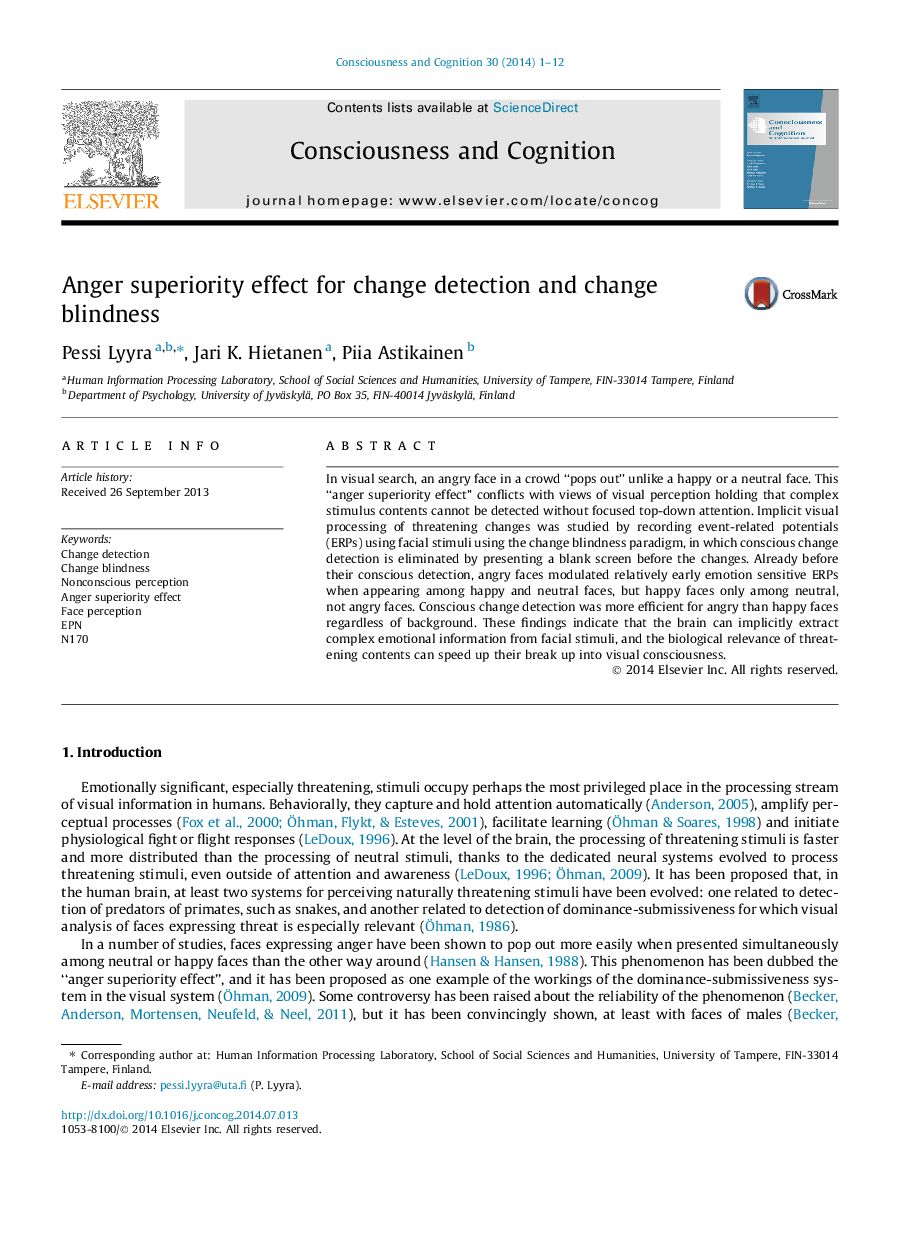| Article ID | Journal | Published Year | Pages | File Type |
|---|---|---|---|---|
| 7289686 | Consciousness and Cognition | 2014 | 12 Pages |
Abstract
In visual search, an angry face in a crowd “pops out” unlike a happy or a neutral face. This “anger superiority effect” conflicts with views of visual perception holding that complex stimulus contents cannot be detected without focused top-down attention. Implicit visual processing of threatening changes was studied by recording event-related potentials (ERPs) using facial stimuli using the change blindness paradigm, in which conscious change detection is eliminated by presenting a blank screen before the changes. Already before their conscious detection, angry faces modulated relatively early emotion sensitive ERPs when appearing among happy and neutral faces, but happy faces only among neutral, not angry faces. Conscious change detection was more efficient for angry than happy faces regardless of background. These findings indicate that the brain can implicitly extract complex emotional information from facial stimuli, and the biological relevance of threatening contents can speed up their break up into visual consciousness.
Related Topics
Life Sciences
Neuroscience
Cognitive Neuroscience
Authors
Pessi Lyyra, Jari K. Hietanen, Piia Astikainen,
